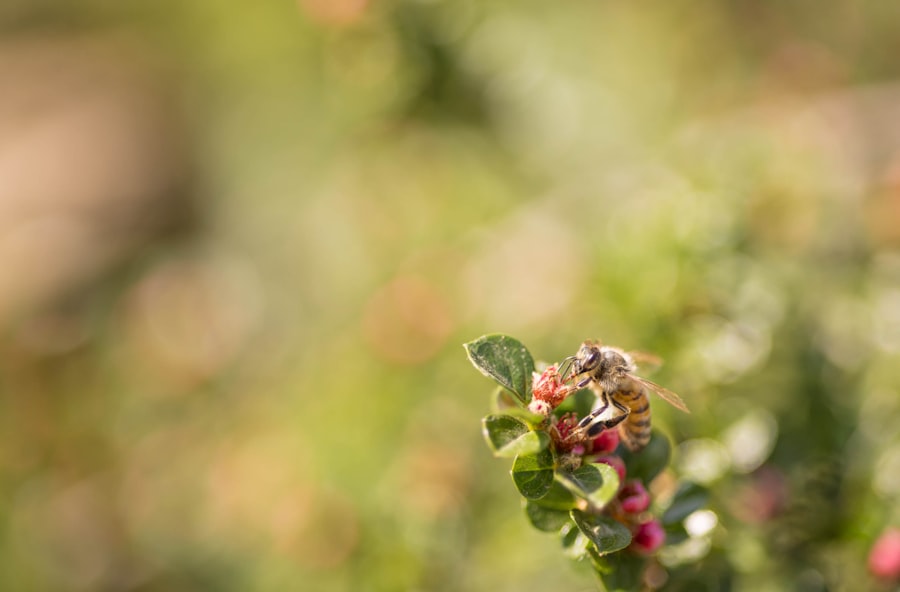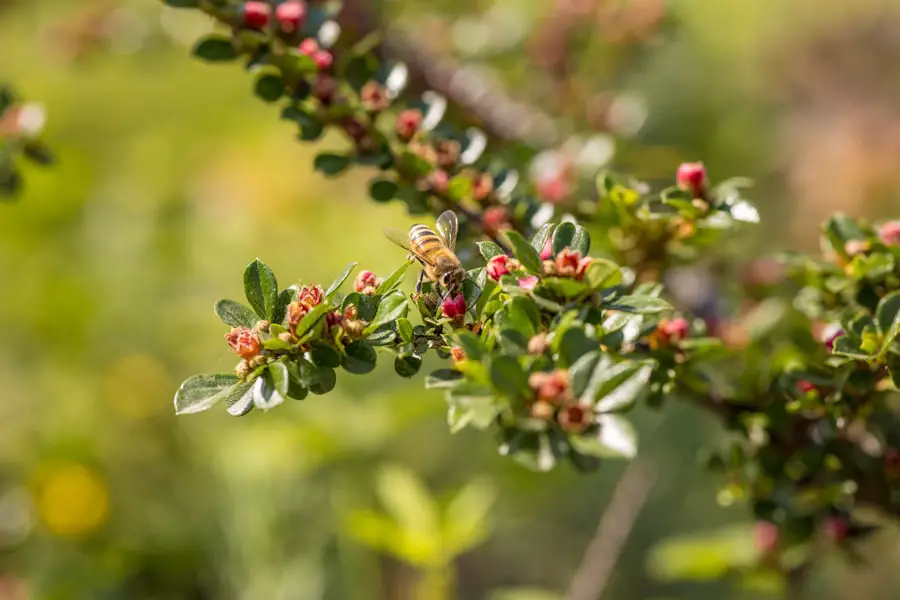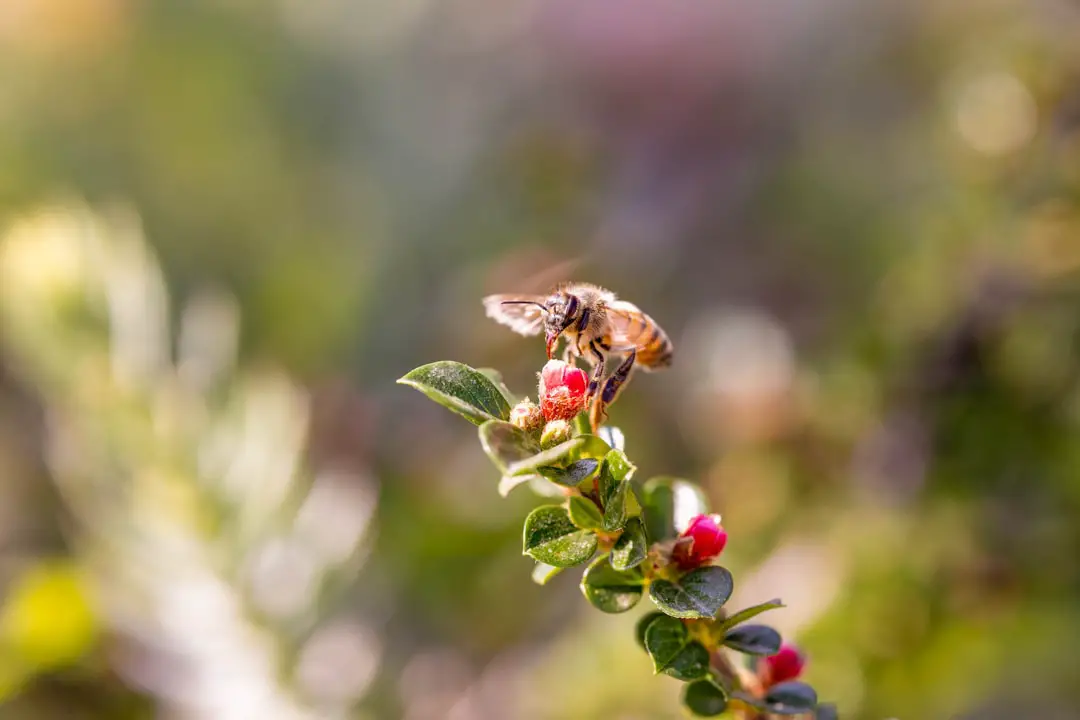Bees are remarkable creatures that play a crucial role in our ecosystems, primarily through their pollination activities. Their behavior and nesting habits are intricately linked to their survival and the health of the environments they inhabit. Bees exhibit a range of behaviors that are essential for their foraging, reproduction, and social structure, particularly in species like honeybees and bumblebees.
These behaviors are not only fascinating from a biological perspective but also vital for understanding how bees interact with their surroundings and contribute to biodiversity. Nesting habits vary significantly among different bee species. While honeybees are known for their complex hives, which can house thousands of individuals, solitary bees often create individual nests in various substrates, such as soil, wood, or plant stems.
The choice of nesting site is influenced by several factors, including availability of resources, environmental conditions, and predation risks. Understanding these nesting behaviors is essential for conservation efforts, as it helps identify critical habitats that need protection to ensure the survival of various bee species.
Key Takeaways
- Bees exhibit complex behavior and nesting habits, which are influenced by various factors.
- Factors such as floral resources, weather conditions, and landscape characteristics can affect the distance bees travel.
- Foraging behavior plays a crucial role in determining the travel patterns of bees.
- Different bee species have varying travel distances, which can impact their pollination effectiveness.
- Environmental factors, such as habitat loss and pesticide use, can significantly impact bee travel patterns and nesting habits.
- Bee travel is closely linked to pollination, as bees transport pollen from one flower to another during their foraging trips.
- Human activities, such as urbanization and agricultural practices, can disrupt bee travel patterns and nesting habitats.
- Conservation efforts, such as creating pollinator-friendly habitats and reducing pesticide use, can support bee travel and nesting habits.
Factors Affecting Bee Travel Distance
Food Availability and Competition
Conversely, in areas where food sources are scarce, bees may venture further afield in search of nectar and pollen. This behavior is particularly evident during peak flowering seasons when competition for resources intensifies.
Species-Specific Foraging Strategies
Another significant factor affecting travel distance is the species of bee. Different species have evolved varying foraging strategies and capabilities. For instance, honeybees can travel several miles from their hives to find food, while many solitary bees typically forage within a much smaller radius.
Physical Characteristics and Foraging Ability
Additionally, the physical characteristics of the bee, such as size and wing morphology, can influence how far they can travel efficiently. Larger bees may have greater endurance and can cover more ground than smaller species, which may be more limited in their foraging range.
The Role of Foraging Behavior in Bee Travel

Foraging behavior is a critical aspect of bee life that directly impacts their travel patterns. Bees employ various strategies to locate food sources, including visual cues from flowers and scent detection through their highly developed olfactory systems. Honeybees, for example, communicate the location of food sources to their hive mates through a unique dance known as the waggle dance.
This intricate form of communication allows them to convey information about the distance and direction of floral resources, enabling other bees to optimize their foraging efforts. The efficiency of foraging behavior also plays a role in determining how far bees will travel. Bees that are adept at locating and exploiting floral resources can minimize their travel distance while maximizing their foraging success.
Factors such as flower density and diversity can influence this efficiency; areas with a rich variety of flowering plants can support more effective foraging trips, allowing bees to gather more resources in less time. In contrast, environments with limited floral diversity may force bees to expend more energy traveling longer distances to meet their nutritional needs.
The Impact of Bee Species on Travel Distance
| Bee Species | Travel Distance (miles) |
|---|---|
| Honeybee | 2-5 |
| Bumblebee | 1-2 |
| Sweat Bee | 0.5-1 |
The diversity among bee species significantly affects their travel distances and foraging behaviors. Honeybees (Apis mellifera), known for their social structure and complex hive systems, can travel up to five miles from their hives in search of food. Their ability to communicate effectively within the colony allows them to exploit distant resources efficiently.
In contrast, bumblebees (Bombus spp.) typically forage within a smaller radius, often ranging from 0.5 to 2 miles from their nests. This difference in travel distance is partly due to their solitary nesting habits and the energy constraints associated with their larger body size. Solitary bees exhibit even more variation in travel distances based on their ecological niches and life histories.
For example, some species of mason bees (Osmia spp.) may only forage within a few hundred meters of their nests, while others might venture further if local resources are depleted. This variability underscores the importance of understanding specific bee species’ behaviors when assessing their ecological roles and conservation needs. Each species has adapted its foraging strategies based on its unique life cycle and environmental pressures, leading to distinct travel patterns that reflect their ecological niches.
The Influence of Environmental Factors on Bee Travel
Environmental factors play a pivotal role in shaping bee travel patterns and behaviors. Weather conditions such as temperature, humidity, and wind can significantly impact a bee’s ability to forage effectively. For instance, high temperatures can lead to increased water loss in bees, making them less likely to venture far from their nests during peak heat periods.
Similarly, strong winds can hinder flight capabilities, forcing bees to remain closer to home or seek shelter until conditions improve. Habitat quality also influences bee travel distances. Urbanization, agricultural practices, and land use changes can fragment habitats and reduce the availability of floral resources.
In urban areas where green spaces are limited, bees may be forced to travel longer distances to find suitable foraging sites. This increased travel can lead to higher energy expenditure and increased mortality rates if bees cannot find adequate food sources or face additional threats such as pesticides or pollution along their routes.
The Relationship Between Bee Travel and Pollination

Foraging Distance and Pollination Efficiency
The effectiveness of pollination is closely linked to the distance bees travel during foraging trips. Bees that forage over larger distances may visit a wider variety of plants, enhancing genetic diversity within plant populations. However, if bees are forced to travel too far due to habitat loss or resource scarcity, it can negatively impact pollination efficiency.
The Consequences of Reduced Foraging Ranges
Studies have shown that reduced foraging ranges can lead to lower fruit set rates in plants that rely heavily on bee pollination, highlighting the interconnectedness of bee behavior and ecosystem health.
This underscores the importance of preserving bee habitats and ensuring that bees have access to a diverse range of plants to forage from.The Broader Implications of Bee Travel
The relationship between bee travel and pollination has far-reaching implications for ecosystem health and agricultural productivity. By understanding the complex dynamics of bee behavior and pollination, we can better appreciate the importance of conserving bee populations and preserving the natural habitats that support them.
Human Impacts on Bee Travel Patterns
Human activities have profoundly affected bee travel patterns and behaviors over recent decades. Urbanization has led to habitat fragmentation, reducing the availability of natural foraging sites and nesting habitats for many bee species. As cities expand and agricultural practices intensify, bees often find themselves navigating through landscapes that are less hospitable due to pesticide use, pollution, and reduced floral diversity.
Agricultural practices also play a significant role in shaping bee travel patterns.
The widespread use of monocultures can limit the availability of diverse floral resources that bees rely on throughout the growing season. Additionally, pesticide application can have detrimental effects on bee health and behavior, impairing their ability to forage effectively or navigate back to their nests.These human-induced changes not only affect individual bee species but also disrupt entire ecosystems by diminishing pollination services that are vital for plant reproduction.
Conservation Efforts to Support Bee Travel and Nesting Habitats
In light of the challenges faced by bee populations due to human impacts, various conservation efforts have emerged aimed at supporting bee travel and nesting habitats. Initiatives such as creating pollinator-friendly gardens that incorporate a diverse array of native flowering plants can provide essential resources for bees throughout the growing season. These gardens not only offer food sources but also serve as critical nesting sites for solitary bee species.
Additionally, habitat restoration projects that focus on re-establishing native plant communities can enhance the overall health of ecosystems by providing bees with ample foraging opportunities and safe nesting environments. Conservation organizations are also advocating for sustainable agricultural practices that minimize pesticide use and promote biodiversity on farms. By implementing integrated pest management strategies and encouraging crop rotation with diverse plantings, farmers can create landscapes that support both agricultural productivity and healthy bee populations.
Public awareness campaigns play a crucial role in these conservation efforts by educating communities about the importance of bees and how individuals can contribute to their protection. Simple actions such as planting native flowers, reducing pesticide use in gardens, and supporting local beekeepers can collectively make a significant difference in promoting healthy bee populations and ensuring they continue to thrive in our changing world.
If you’re interested in exploring the outdoors and learning more about the natural world, you may also enjoy reading about the best hiking backpack for multi-day trekking. This article provides valuable information on choosing the right backpack for your outdoor adventures. Check it out here to ensure you’re well-prepared for your next journey into the wilderness.
FAQs
What is the typical foraging range of a bee from its nest?
Bees typically forage within a 2-3 mile radius from their nest, although some species may travel up to 5 miles.
How far can bees travel in search of food?
Bees are capable of traveling several miles in search of food sources, and can cover a distance of up to 6 miles in a single foraging trip.
Do bees always travel the same distance from their nest?
No, the foraging range of bees can vary depending on factors such as the availability of food sources, the health of the colony, and environmental conditions.
What factors can influence the foraging range of bees?
Factors such as the availability of nectar and pollen, the presence of competing colonies, and the quality of the forage area can all influence the foraging range of bees.
How do bees navigate back to their nest after foraging?
Bees use a combination of visual landmarks, the position of the sun, and their sense of smell to navigate back to their nest after foraging.
